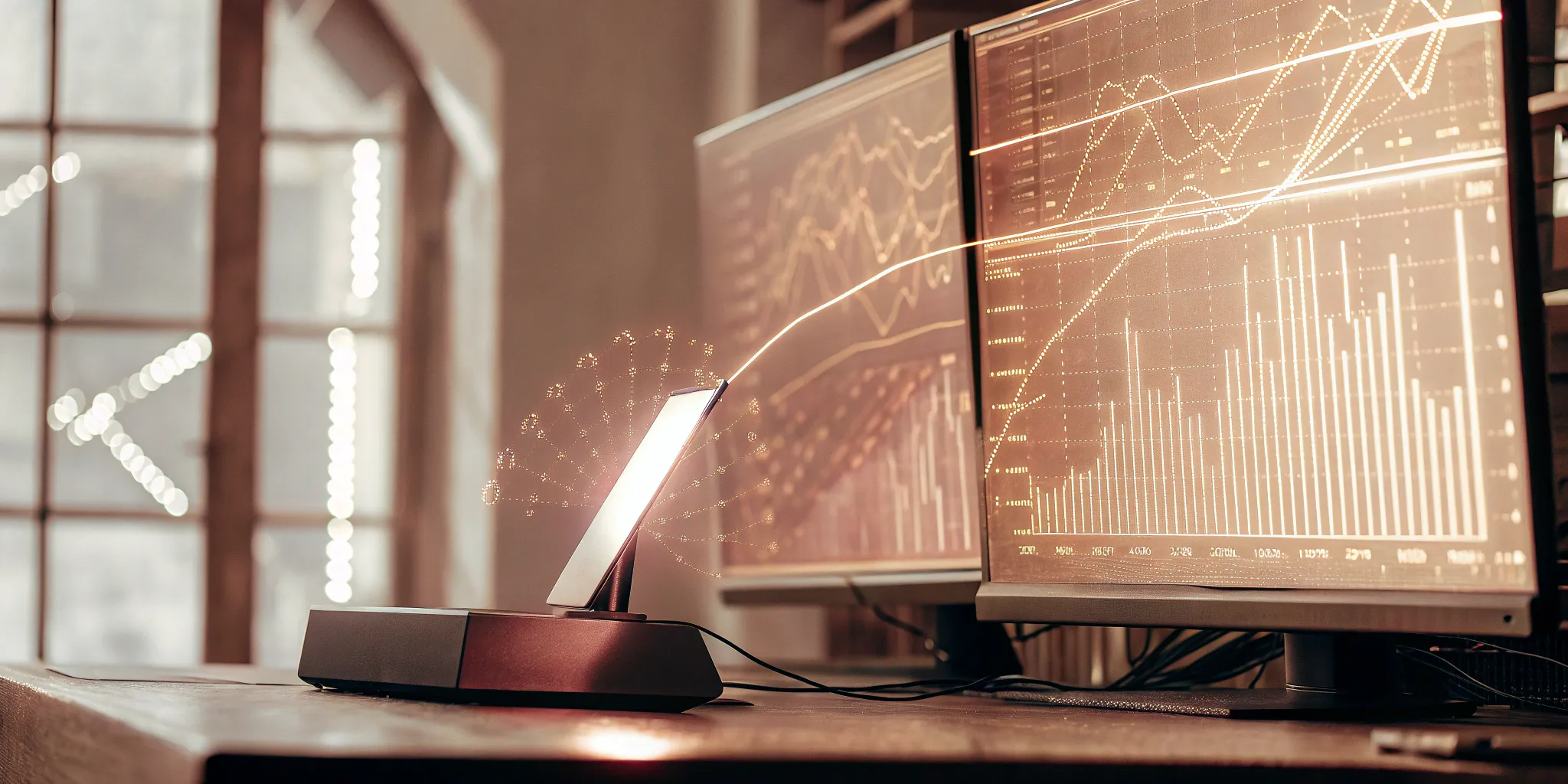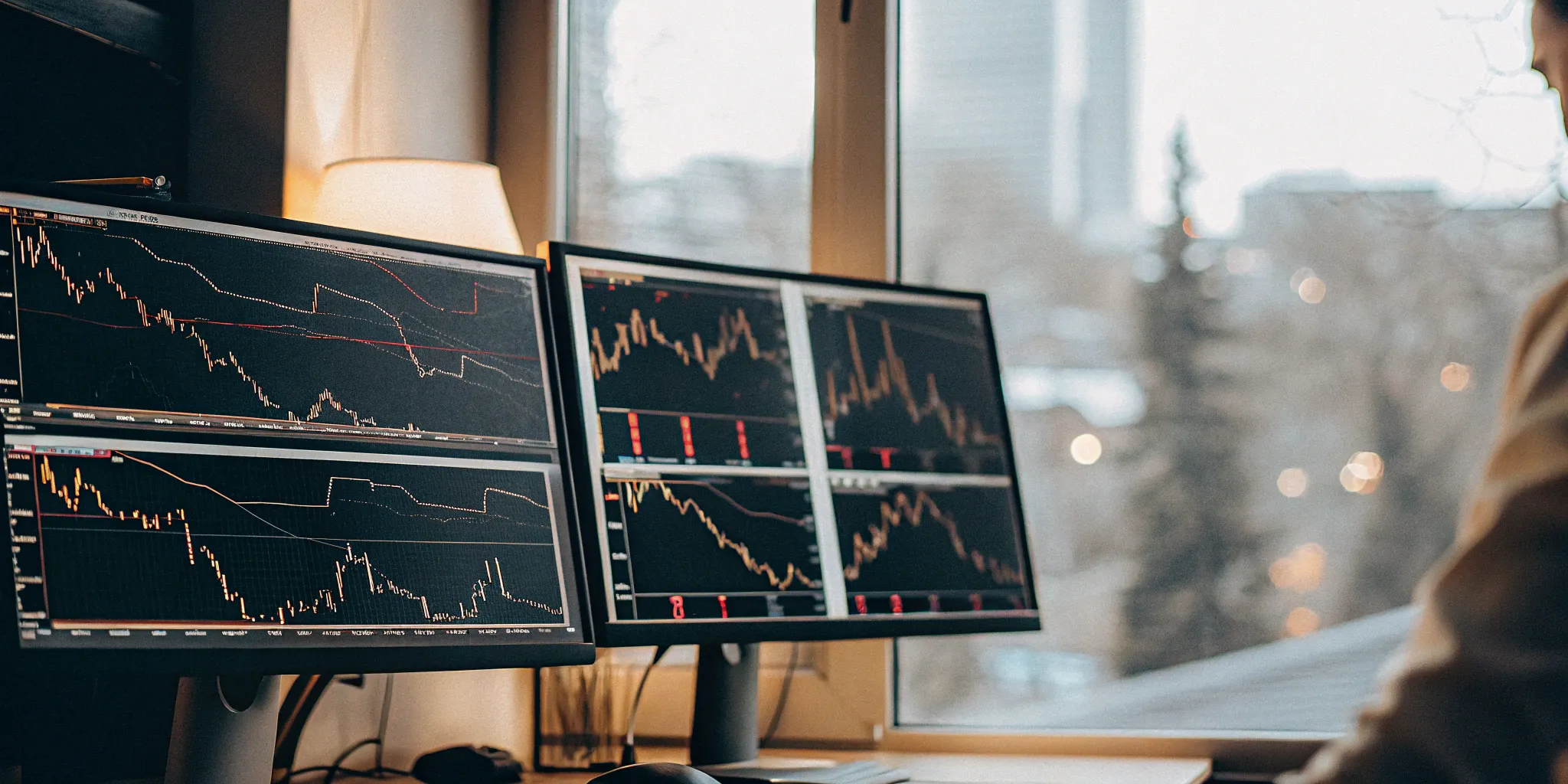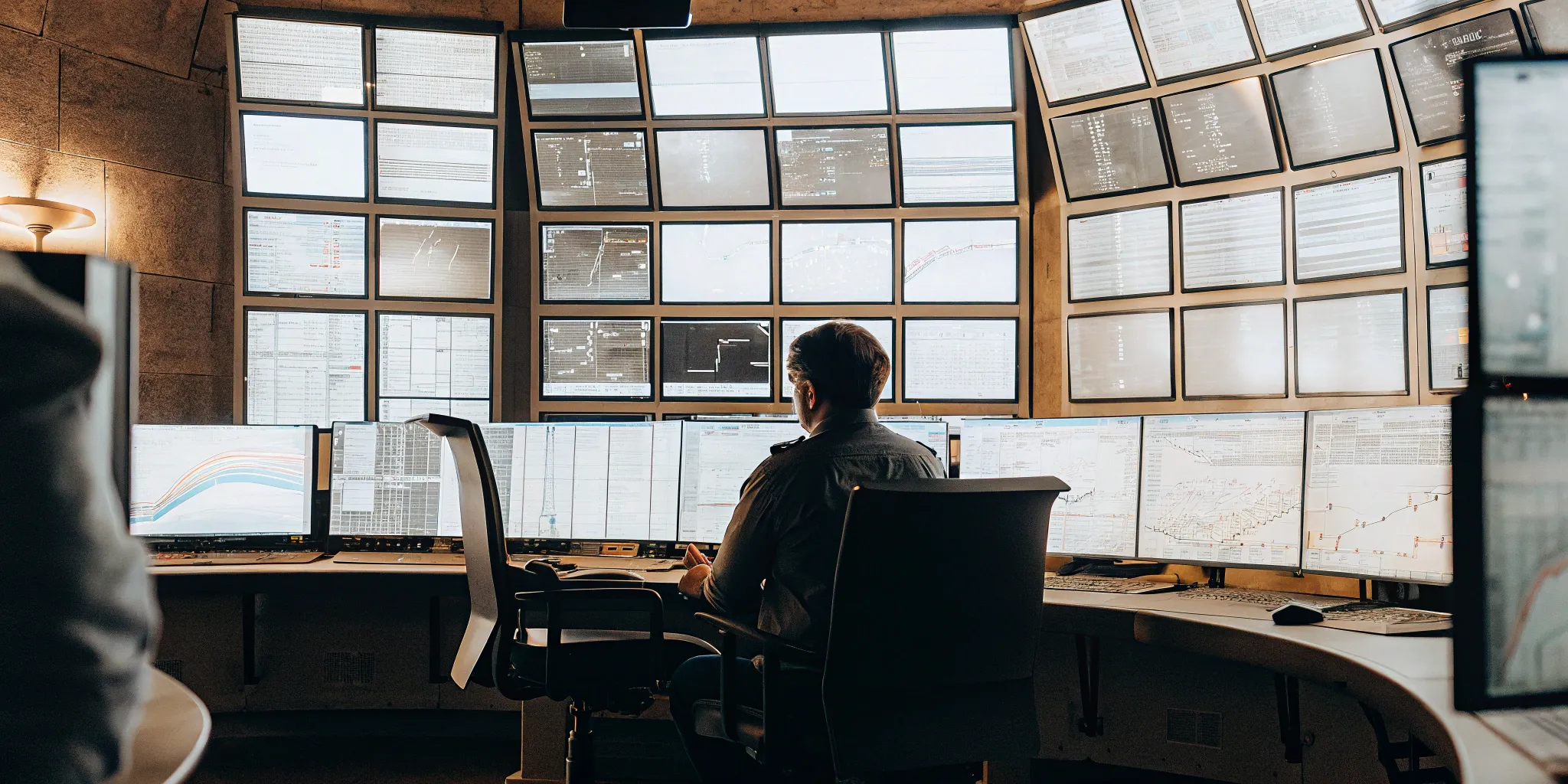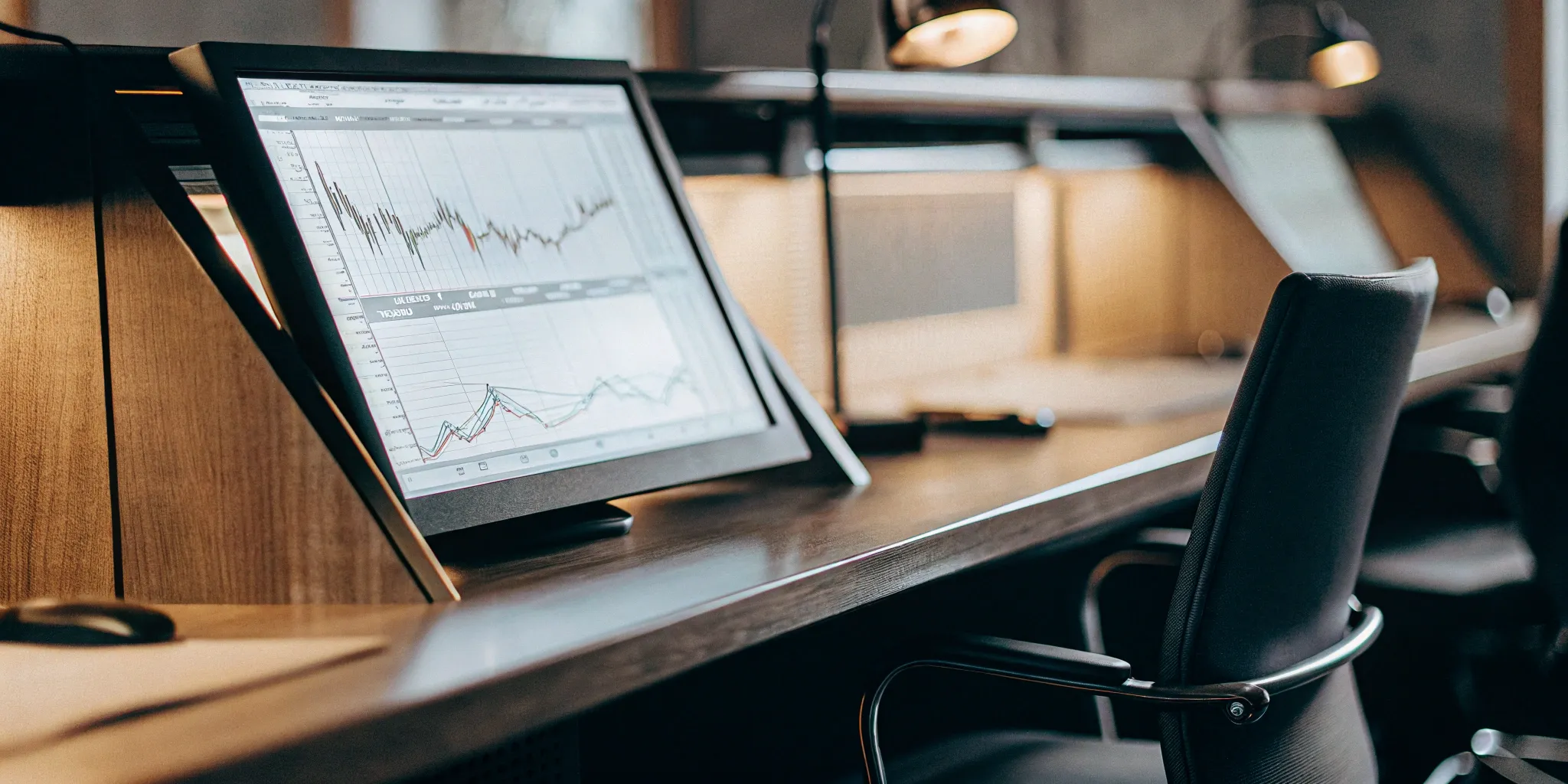Tired of chasing market trends and second-guessing your investment decisions? Fully automated software trading AI for wealth growth offers a compelling alternative. Having a tireless, data-driven expert manage your portfolio, identify opportunities, and execute trades with speed and precision is a game-changer. This guide explores the transformative potential of AI in trading, breaking down how these systems work, the key features to look for in a platform, and the benefits and risks involved. We’ll also examine the leading AI trading platforms and offer practical steps to get you started. Join us as we explore how AI can empower you to achieve your financial goals.
Key Takeaways
- AI-driven trading systems offer speed and consistency: By removing emotional biases and enabling 24/7 market monitoring, these systems can execute trades faster and potentially improve returns. Remember that all investments carry risk, and AI is not a guarantee of profit.
- Finding the right platform aligns technology with your goals: Prioritize platforms with robust analytics, backtesting, customizable strategies, real-time data, strong security, and responsive customer support. Consider your investment style, risk tolerance, and preferred exchanges.
- Stay engaged and informed in your AI trading journey: Regularly monitor your AI’s performance, adjust strategies as needed, and keep up-to-date with evolving regulations to maximize the potential of AI-powered trading.
What is Fully Automated AI Trading Software?
Fully automated AI trading software uses advanced algorithms and machine learning to analyze market data and execute trades without human input. These systems identify and capitalize on trading opportunities at speeds and with an accuracy that surpasses human capability, making them a powerful tool for growing wealth in the financial markets. Think of it as having a tireless expert working 24/7 to optimize your investments.
Key Components of AI Trading Systems
AI trading systems analyze massive amounts of market data in real-time, identifying trends, patterns, and opportunities that a human trader would likely miss. They process information from various sources, including news feeds, social media sentiment, and historical price charts, to make informed trading decisions. These systems are constantly evolving, learning from past market behavior to adapt to new information and changing conditions. As AI and machine learning advance, we can expect even more sophisticated automated trading systems that learn and adapt in real time, integrating big data and even information from the Internet of Things (IoT) to refine trading strategies. This constant evolution ensures that the AI stays ahead of the curve, maximizing potential returns.
Machine Learning’s Role in AI Trading
Machine learning (ML) is the engine that drives AI trading. ML algorithms analyze enormous volumes of financial data in real time, allowing them to spot patterns and make informed trading decisions. This data-driven approach removes emotional bias and allows the system to execute trades based purely on statistical probabilities and market analysis. The potential for AI to influence price formation and market dynamics could lead to a reinvention of trading strategies, as highlighted in this algorithmic trading news brief. This means that AI trading isn’t just about automating existing strategies; it’s about discovering entirely new approaches to market analysis and wealth generation. For a deeper look at how AI is transforming stock trading, check out this Forbes article.
How Automated AI Trading Builds Wealth
Automated AI trading systems offer several advantages that can contribute to wealth building. Let’s explore some of the key ways these systems can enhance your investment strategy.
24/7 Market Monitoring and Execution
Unlike human traders constrained by time zones and needing sleep, AI operates continuously. Automated systems can monitor global markets around the clock, identifying opportunities at any time. This constant vigilance ensures you’re always positioned to capitalize on favorable market conditions. AI excels at analyzing vast quantities of data in real time, spotting subtle trends and patterns that a human trader might miss.
Emotion-Free Decisions
One of the biggest challenges in trading is managing emotions. Fear and greed can lead to impulsive decisions that derail even the most well-thought-out strategies. AI eliminates this emotional element. Automated systems execute trades based on pre-defined rules and algorithms, removing the risk of emotional biases. This objectivity is particularly valuable during periods of market volatility, when staying rational can be difficult. AI’s data-driven approach provides a steady hand, ensuring consistent execution even when markets are turbulent.
High-Speed Trade Execution
In today’s fast-moving markets, speed is often the key to success. Automated AI trading systems can execute trades incredibly fast, reacting to market changes within milliseconds. This speed advantage allows these systems to capitalize on fleeting opportunities that would be impossible for a human trader to capture. This rapid execution minimizes slippage—the difference between the expected price of a trade and the price at which it’s actually executed—and maximizes potential profits.
Risk Management and Position Sizing
Effective risk management is crucial for long-term trading success. AI trading systems can be programmed with sophisticated risk management rules, automatically adjusting position sizes and stop-loss orders to protect your capital. By relying on data analysis and backtesting, AI can help you optimize your risk exposure and avoid significant losses. While AI can manage many aspects of risk, remember that cybersecurity is essential to protect your trading platform from external threats.
Essential Features in Automated AI Trading Platforms
Reliable automated AI trading platforms share a few key features. Look for these must-haves when choosing software to manage your investments.
Advanced Analytics and Backtesting
AI trading systems analyze massive amounts of market data in real time, identifying trends and opportunities a human trader would likely miss. This speed advantage lets AI capitalize on fleeting market inefficiencies. A robust platform should also offer backtesting capabilities, allowing you to test your strategies against historical data to fine-tune your approach and understand potential performance.
Customizable Trading Strategies
Your platform should offer flexibility. The ability to customize trading strategies is crucial for aligning the AI with your investment goals and risk tolerance. Whether you prefer a trend-following approach or a mean-reversion strategy, the software should adapt to your specific needs. Some platforms, like ByBit, even allow you to build your own custom bots.
Real-Time Market Data Integration
Real-time data is the lifeblood of effective AI trading. Your platform needs seamless integration with live market feeds to ensure the AI is always acting on the most current information. This real-time data powers quick reactions to market changes and optimal trade execution.
Security and Encryption
Security is paramount when entrusting your funds to an automated platform. Look for robust security measures, including two-factor authentication and high-level encryption, to protect your investments and personal information.
User-Friendly Interface and Customer Support
Even with sophisticated technology, a user-friendly interface is essential. You should be able to easily monitor your trades, adjust settings, and understand performance reports. Reliable customer support is also crucial for addressing any technical issues or questions that may arise. Make sure the platform offers accessible support channels, whether it’s through email, chat, or phone.
Leading Automated AI Trading Platforms
Several platforms offer automated AI trading capabilities, each with its own strengths and weaknesses. Choosing the right one depends on your individual needs and investment goals. Let’s explore some of the leading options:
FN Capital’s FAST AI
FN Capital’s proprietary FAST AI algorithm focuses on high-frequency trading of the EUR/USD pair. This specialization aims for optimized liquidity and precise execution. The platform emphasizes a four-year verified track record and risk management through its Dynamic Algorithmic Risk Tool (DART). For more information, visit the FN Capital website.
Trade Ideas
Trade Ideas excels in algorithmic trading and bot functionality. It provides powerful tools to automate strategies and enhance decision-making, making it a popular choice for active traders. You can explore their pricing and features to learn more.
StockHero
StockHero lets you create your own trading bots or rent pre-built strategies from a marketplace. Seamless API connections to various brokers facilitate automated trading.
TrendSpider
TrendSpider offers comprehensive market research tools, including AI-powered pattern recognition and backtesting. This platform is a valuable resource for traders looking to automate their technical analysis. Visit the TrendSpider website for more details.
Quantconnect
Quantconnect empowers users to design, backtest, and deploy algorithms using various programming languages. This flexibility caters to both novice and experienced traders. Learn more about their algorithmic trading capabilities on their website.
Alpaca
Alpaca provides commission-free trading and an API for algorithmic trading. This makes it a popular choice for developers and traders seeking automated, cost-effective solutions. Explore their API documentation to get started.
MetaTrader
MetaTrader supports automated trading through Expert Advisors (EAs). Users can create custom strategies and automate their trading processes, giving them significant control over their approach. You can find more information on the MetaQuotes website.
NinjaTrader
NinjaTrader offers advanced charting and automated trading capabilities, along with a marketplace for third-party add-ons. This versatility makes it a robust platform for active traders. Visit the NinjaTrader website for details.
Axi Select
Axi Select offers AI-powered trading signals and automated execution. For more information, you can visit the Axi website.
Benefits and Risks of Automated AI Trading
Automated AI trading platforms offer exciting possibilities, but it’s important to understand both the potential upsides and the challenges. Let’s take a look at the key benefits and risks.
Consistent Performance and Time Efficiency
AI trading systems excel at processing vast quantities of market data in real time. They identify trends and opportunities that would be nearly impossible for a human trader to spot at the same speed. These systems execute trades with incredible speed and precision, capitalizing on fleeting market opportunities within milliseconds. This speed and efficiency frees up your time to focus on other aspects of your life or investment strategy. AI can analyze market conditions 24/7 and execute trades at any time, maximizing potential returns.
Market Volatility and Unexpected Events
While AI can react to market changes faster than any human, unexpected events can still pose challenges. “Black swan” events, by definition, are unpredictable and can disrupt even the most sophisticated AI trading models. However, AI’s ability to analyze data and adapt quickly can be a significant advantage during periods of extreme volatility, where traditional strategies often falter. AI can identify and respond to market shifts, potentially mitigating losses and capitalizing on new opportunities.
Over-Optimization and Curve Fitting
One risk of AI trading is over-optimization, also known as curve fitting. This happens when an AI model is trained so specifically on historical data that it performs poorly on new, unseen data. It’s essential to understand how your AI system makes decisions and to ensure it’s not simply memorizing past market behavior. AI systems thrive on quality data, and the rapidly changing financial landscape requires constant adaptation and refinement of the data used to train these models. Regularly evaluating and adjusting your AI model is crucial to avoid over-optimization.
Technical Failures and System Errors
Like any technology, automated AI trading platforms are susceptible to technical glitches and system errors. Prioritizing cybersecurity is crucial to protect your investments and personal information. Algorithmic biases can also emerge, potentially leading to skewed trading decisions. Addressing these technical and data quality challenges is essential for the long-term success of AI trading. Choosing a reputable platform with robust security measures and ongoing system maintenance can help mitigate these risks.
Choose the Right Automated AI Trading Platform for Your Goals
Not all AI trading platforms are created equal. Finding the right one requires careful consideration of your individual needs and goals. Here’s what to consider when making your decision:
Assess Your Investment Style and Risk Tolerance
Before exploring automated trading, think about your investment style. Are you a long-term investor seeking steady growth, or do you prefer short-term, potentially higher-risk strategies? Understanding your risk tolerance is equally important. How much potential loss are you comfortable with? Aligning your chosen platform with your investment style and risk tolerance is key for a positive trading experience.
Evaluate Platform Features and Pricing
Different platforms offer different features. Some excel at algorithmic trading and bot functionality, while others focus on AI-powered pattern recognition and backtesting. Consider your needs. Do you need advanced charting tools? Are you interested in specific asset classes like forex or cryptocurrencies? Pricing models also vary; some platforms charge a flat fee, while others take a percentage of profits. Compare features and pricing to find the best fit. Some platforms, like Trade Ideas, offer free trials, letting you test the software before committing.
Consider User Experience and Support
Even sophisticated AI trading platforms are useless if you can’t use them. Prioritize platforms with user-friendly interfaces, intuitive navigation, and clear instructions. Reliable customer support is also essential. What if you encounter a technical issue or have a question about your account? Look for platforms that offer responsive customer service. Strong security measures are also critical. Protecting your funds and personal information should always be a top priority.
Check Exchange Compatibility
If you plan to trade on specific exchanges, double-check that your chosen platform integrates with them. Compatibility ensures seamless order execution and avoids potential issues. Some platforms, like the Bybit crypto exchange, even allow you to build custom trading bots or use AI-recommended bots directly within their platform.
Start with Automated AI Trading
Ready to experience the benefits of AI trading? Here’s how to get started:

Set Up Your Trading Account
First, choose an AI trading platform that fits your needs. Look for platforms with intuitive interfaces, robust features, and strong security. Once you’ve selected a platform, create an account. This typically involves providing some personal information and verifying your identity. Some platforms may also require you to connect your bank account or credit card to fund your trades. Review the platform’s fee structure and any minimum deposit requirements. For example, Capitalise.ai offers code-free automation and backtesting.
Configure Your AI Trading Parameters
After setting up your account, configure your AI trading parameters. This is where you’ll define your investment goals, risk tolerance, and trading strategies. AI trading systems analyze vast amounts of market data in real-time, identifying trends and opportunities. Specify the assets you want to trade, the amount of capital you’re willing to allocate, and your acceptable risk level. Many platforms offer pre-built trading strategies or allow you to customize your own using technical indicators and other parameters. These advanced bots process market data and execute trades with incredible speed. AI-driven trading systems can identify and capitalize on split-second opportunities.
Monitor and Adjust Your Strategies
While AI trading systems operate autonomously, it’s essential to monitor their performance and adjust as needed. Regularly review your trading logs and analyze the results. Are your strategies performing as expected? Are you achieving your investment goals? AI trading must follow ethical and legal rules. Understanding the rationale behind AI decisions is crucial for maintaining trust and ensuring strategies align with your expectations. Consider the potential risks and rewards of AI trading. Don’t be afraid to tweak your parameters or explore new strategies based on market conditions and your evolving investment objectives. Resources like Astramontis offer insights into the limitations and risks of using AI in stock trading. Consistent monitoring and adjustment are key to maximizing your returns with automated AI trading.
Common Misconceptions about Automated AI Trading
Automated AI trading has revolutionized how many approach financial markets, but it’s not without its misconceptions. Let’s clear up a few common myths.
The Myth of Guaranteed Profits
One of the biggest misunderstandings about AI trading is the idea of guaranteed profits. While AI can analyze vast amounts of data and execute trades quickly, it’s not a magic bullet. AI trading systems, like any investment strategy, come with inherent risks. Market volatility, unexpected events, and even technical glitches can impact performance. As Astramontis points out, “AI trading systems have brought great advancements to financial markets… However, it is crucial to be aware of its limitations and associated risks.” A well-designed AI system can identify profitable opportunities, but success depends on various factors, including market conditions and the quality of the algorithm. Remember, no investment guarantees a particular outcome. Even with sophisticated technology, risk management is key. Global Trade Mag highlights this, stating that “despite the potential for high returns, the success of AI trading systems is not guaranteed and depends heavily on the quality of the data and the bot’s design.”
The Importance of Human Oversight
Another misconception is that AI trading eliminates the need for human involvement. While AI can automate many aspects of trading, human oversight is still crucial. Think of AI as a powerful tool that needs a skilled operator. Humans play a vital role in setting investment goals, defining risk tolerance, and monitoring the AI’s performance. We also need to understand the “why” behind the AI’s decisions. As Astramontis explains, “AI trading systems heavily depend on historical data to make predictions… Understanding the rationale behind AI decisions is crucial for maintaining trust.” This understanding allows us to adjust strategies, refine parameters, and ensure the AI aligns with our overall investment objectives. Impact Wealth emphasizes this strategic approach, noting that “successful implementation of AI trading systems requires a strategic approach focused on technical and operational considerations.” Human oversight ensures that the AI remains a valuable asset in our investment journey.
AI’s Role in Market Analysis vs. Decision-Making
Finally, it’s important to clarify AI’s role in market analysis versus decision-making. AI excels at analyzing vast amounts of market data in real-time, identifying trends and patterns that would be impossible for a human to spot at the same speed. Leadafi highlights this advantage, stating that “AI trading systems analyze vast amounts of market data in real-time, identifying trends, patterns, and opportunities that would be impossible for a human to spot at the same speed.” AI can process news, social media sentiment, and economic indicators to provide a comprehensive view of the market. Forbes reinforces this point, explaining that “AI technologies like machine learning, deep learning, and NLP can analyze massive amounts of data and find patterns that people would otherwise be unable to detect.” However, the ultimate decision of whether to execute a trade often rests with the human investor. AI provides the insights, but we retain control over our investment choices. This balance of AI-driven analysis and human decision-making empowers us to make informed choices and achieve our financial goals.
The Future of Automated AI Trading and Wealth Growth
The world of automated AI trading is constantly evolving, promising exciting advancements that could reshape how we build wealth. Let’s explore some key trends and potential impacts:
Advancements in AI and Machine Learning
AI trading systems already analyze massive amounts of market data in real time, spotting trends and opportunities a human trader might miss. As AI and machine learning advance, we can expect even more sophisticated automated trading systems. Think of systems that learn and adapt even faster, processing data and executing trades at speeds far beyond human capability, capitalizing on fleeting market opportunities. This increased automation has the potential to significantly enhance trading efficiency and potentially improve returns.
Integration with Blockchain and DeFi
Blockchain technology and decentralized finance (DeFi) offer intriguing possibilities for the future of AI trading. Decentralized exchanges and smart contracts could enable more secure and transparent automated trading, potentially reducing costs and increasing access for investors. While still early, the integration of AI trading with blockchain and DeFi could revolutionize how we interact with financial markets. The projected growth of the AI in Trading market, estimated to reach a valuation of USD 50.4 Billion by 2033, underscores the transformative potential of this technology.
Potential Market Impact
The increasing influence of AI in trading could reshape market dynamics and price formation, leading to new trading strategies and potentially increased market efficiency. However, it’s important also to acknowledge the potential risks. While AI excels at identifying patterns and reacting to market changes, unforeseen “black swan” events—those highly improbable but high-impact occurrences—still pose a challenge. AI trading systems, like any trading strategy, are not immune to market risks. Understanding these potential impacts, both positive and negative, is crucial for anyone interested in the future of automated AI trading.
Regulatory Considerations for Automated AI Trading
AI trading is powerful, but it’s not a free-for-all. Like any financial activity, automated AI trading operates within a regulatory landscape designed to protect market integrity and investor interests. Understanding these regulations, both current and potential, is crucial for anyone considering AI-powered trading systems.
Current Regulations
Existing regulations aim to ensure fair market practices and protect investors. AI trading systems, while innovative, must still adhere to these established rules. This includes anti-money laundering (AML) laws and know-your-customer (KYC) regulations, which are fundamental for maintaining transparency and preventing illicit activities within financial markets. These regulations underscore the importance of responsible AI development and deployment for trading. As AI becomes more prevalent, regulators are increasingly focused on ensuring its ethical and legal use in financial strategies.
Compliance Requirements for Users
For users of AI trading platforms, compliance is critical. One key area is cybersecurity. Protecting your AI-driven trading platform from unauthorized access and cyber threats is paramount. Robust security measures, including strong passwords, two-factor authentication, and regular software updates, are essential. Additionally, the quality of data feeding your AI system is critical. AI thrives on accurate, reliable information. Using low-quality or manipulated data can lead to poor trading decisions and potential losses. As the financial world rapidly evolves with the integration of AI, staying informed about best practices for data management and security is crucial for all traders.
Potential Future Regulations
The rapid advancement of AI in trading has outpaced the development of specific regulations. However, regulatory bodies are actively working to address this evolving landscape. We can anticipate future regulations to focus on areas like algorithmic transparency and accountability. This may involve requiring traders to disclose the logic behind their AI’s trading decisions and establishing mechanisms to hold developers accountable for any malfunctions or unintended consequences. A phased approach, starting with simpler, lower-risk AI applications and gradually increasing regulatory oversight as the technology matures, is likely. This measured approach will allow regulators to refine their strategies while fostering innovation in the field of AI-driven trading.
Related Articles
- Best Automated Trading Software Platforms for Every Investor – FN Capital
- Automated Trading Returns: Strategies & Tech for Success – FN Capital
- How AI Improves Algo Trading: Speed, Accuracy & Profits – FN Capital
- Futures Trading Algorithms: The Ultimate Guide – FN Capital
- AI-Powered Trading Solutions: An Investor’s Guide – FN Capital
Frequently Asked Questions
Is automated AI trading suitable for beginners?
Automated AI trading can be a valuable tool for both beginners and experienced traders. For beginners, it offers a simplified approach, removing the need for constant market monitoring and complex analysis. However, it’s essential to understand the basics of trading and risk management before using any automated system. Start with small investments and gradually increase your exposure as you gain experience and confidence. Choosing a platform with a user-friendly interface and educational resources can also ease the learning curve.
How do I choose the right AI trading platform?
Selecting the right platform depends on your individual needs and investment goals. Consider your trading style, risk tolerance, and preferred asset classes. Look for platforms with robust security measures, transparent pricing, and reliable customer support. A user-friendly interface and access to educational resources are also important, especially for beginners. Some platforms offer free trials or demo accounts, allowing you to test the software before committing real capital.
What are the biggest risks of automated AI trading?
While AI trading offers many advantages, it’s crucial to be aware of the potential downsides. Market volatility and unexpected events can still impact performance, even with sophisticated algorithms. Technical glitches and system errors are also possibilities. Over-optimization, where an AI is trained too specifically on past data, can lead to poor performance on new data. Finally, ensure your chosen platform prioritizes security to protect your investments and personal information.
How much human oversight is required with AI trading?
Although AI automates many trading tasks, human oversight remains essential. You should regularly monitor the AI’s performance, adjust strategies as needed, and understand the rationale behind its decisions. Setting clear investment goals, defining risk tolerance, and staying informed about market conditions are crucial for successful AI trading. Think of AI as a powerful tool that requires a skilled operator to maximize its potential.
What is the future of automated AI trading?
The future of AI trading is bright, with continuous advancements in AI and machine learning promising even more sophisticated systems. We can expect faster execution speeds, improved predictive capabilities, and greater integration with other technologies like blockchain and DeFi. However, regulatory oversight will also play a crucial role in shaping the future of this rapidly evolving field. Staying informed about these developments is essential for anyone interested in the potential of AI-driven trading.





